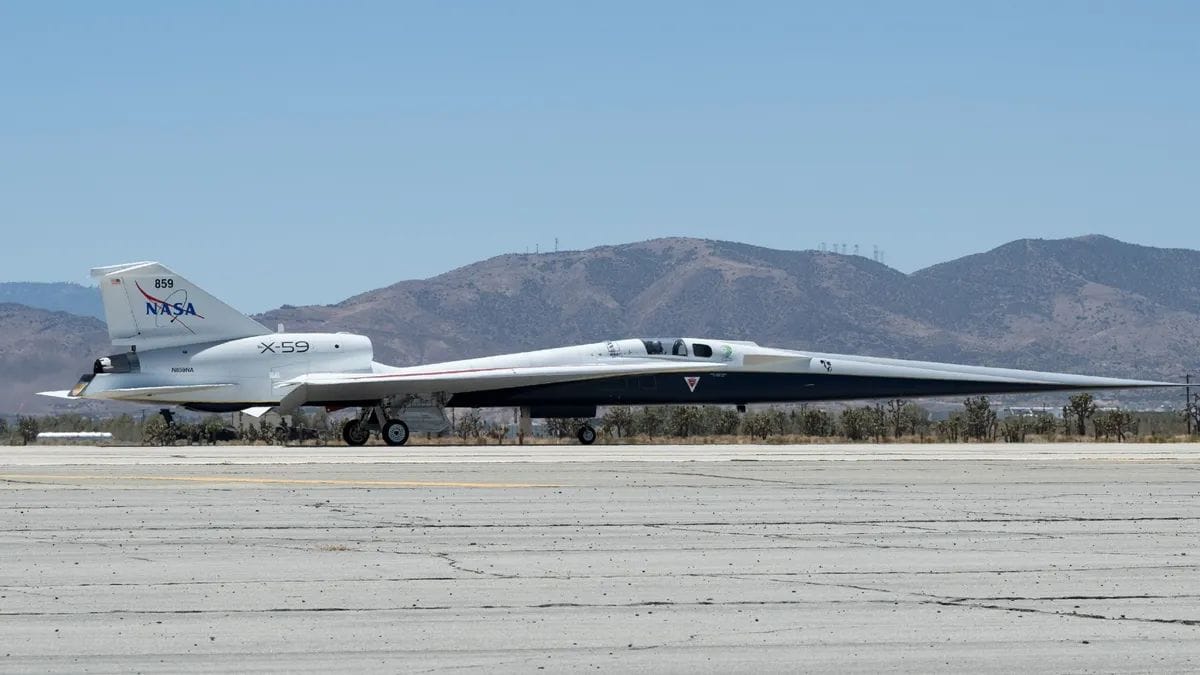NASA’s X-59 Moves Closer to First Flight with Advanced Taxi Tests and Augmented Vision

X-59 of NASA has been designed from the ground to fly at a faster speed of sound without making thunderous sonic booms, which are usually associated with supersonic flight. This 99-foot aircraft, which features a logically elongated design, jettisons the front windscreen and is now heading towards the runway. Pilots can see what is at the front through an augmented reality (AR) enabled closed-circuit camera system, which is termed by NASA as the External Vision System (XVS). NASA took control of an experimental aircraft and performed taxi tests on it during this month.
According to As per NASA, the test pilot Nils Larson, during the test, drove the X-59 at the runway by keeping a low speed. This is done to ensure the working of the steering and braking systems of the jet. Lockheed Martina and NASA would perform the taxi tests at high speed, in which the X-59 will move faster to make it to the speed at which it will go for takeoff.
Taxi tests are held at the U.S. Air Force’s Plant 42 facility in Palmdale, California. The contractors and the Air Force utilise the plant for manufacturing and testing the aircraft. Lockheed Martin has developed this aircraft, whose Skunk Works is found in Plant 42.
Some advanced aircraft of the U.S. military were developed to a certain extent at Plant 42, together with the B-2 Spirit, the F-22 Raptor, and the uncrewed RQ-170 Sentinel spy drone.
SOFIA airborne observatory aircraft, which is a flying telescope called Plant 42, home recently retired. The space shuttle of the agency is the world’s first reusable spacecraft; these were assembled and tested at the facility.
Such taxi tests have started over the last months. NASA worked in collaboration with the Japan Aerospace Exploration Agency for testing a scale model of the X-59 in the supersonic wind tunnel to measure the noise created under the aircraft.